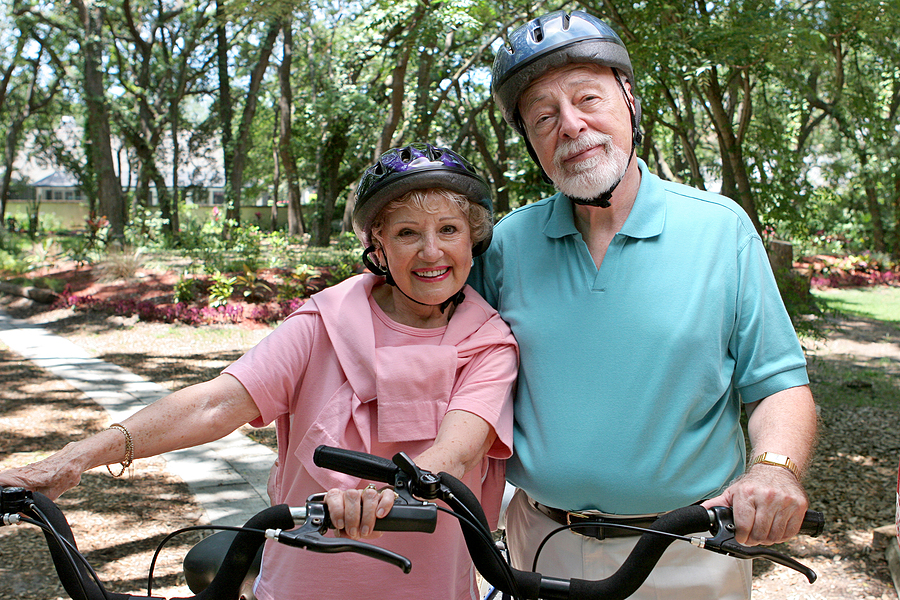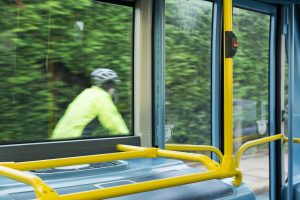Cycling is more than just a mode of transport or a great way to keep fit; it’s a passion, a community, and a lifestyle. For many, the wind in your face, the sound of rubber on pavement, and the freedom of the open road is irreplaceable. Yet, the joy of cycling is not without its risks. Each year, thousands of cyclists are injured or killed in traffic accidents due to drivers not using reasonable care. To truly enjoy the ride, you must cycle with confidence, and confidence stems from thorough understanding and implementation of safety measures.
In this comprehensive guide, we provide essential safety tips for cyclists, with a focus on rules of the road, personal safety measures, emergency preparedness, and more. Whether you’re a seasoned cyclist, a beginner, or simply someone who loves to get out on a bike from time to time, these tips will help ensure you enjoy your ride safely.

Important Bike Ride Preparations
Your safety begins before you even throw a leg over your bike. It’s the preparation and choices you make that can often dictate the outcome of your ride.
Choose the Right Gear and Bike
The first step to safety is ensuring you have the appropriate equipment. This isn’t just about aesthetics; it could save your life.
- The Right Bike: Choose a bike that’s the right size and type for your intended use. If you’re commuting, a hybrid or road bike might be most suitable. For mountain trails, a sturdy mountain bike is essential.
- Protective Gear: Always wear a helmet; it’s your best protection against a head injury. Also consider knee and elbow pads, especially if you’re biking with children or on rough terrain.
The Importance of Maintenance
A well-maintained bike is a safe bike. Regular maintenance can prevent accidents from mechanical failure.
- Tire Pressure: Check your tire pressure before every ride. Properly inflated tires provide the best grip and reduce your chance of a flat or losing control.
- Brake and Gear Function: Ensure that your brakes are responsive and your gears are shifting smoothly.
Weather and Road Conditions
You need to be able to adapt to whatever the road or trail throws your way.
- Weather Awareness: Check the weather forecast and dress appropriately. Rain can make roads slick, and fog can reduce visibility.
- Road Research: If you’re planning a new route, look into the road conditions. Construction, poor pavement, or even a new one-way street can be significant hazards.
Following the Rules of the Road
Understanding and following the rules puts everyone on the road at ease and reduces the chance of accidents.
Know Local Traffic Laws
In the state of Indiana, cyclists have the same rights and responsibilities as any other vehicle on the road. This includes stopping at red lights and stop signs, signaling turns, and yielding to pedestrians.
- Bike Lanes and Sidewalks: Know where you’re allowed to ride. In most places, if there’s a bike lane, you should use it. If riding on the sidewalk, yield to pedestrians and watch for cars entering or exiting driveways.
- Positioning on the Road: Take the right lane when necessary for your safety and to discourage unsafe passing by motorists.
Navigating Intersections
Intersections are where most bike-car collisions happen, so approach with caution.
- Be Visible: Make yourself as visible as possible. Wear brightly colored clothing and use lights at night.
- Scan the Scene: Look for turning vehicles or pedestrians before proceeding through an intersection and try to make eye contact with drivers when possible.
Sharing the Road
Cyclists share the road with a variety of vehicles. Learning to share effectively can prevent accidents.
- Stay Predictable: Don’t make sudden moves, and always use hand signals to indicate changes in direction.
- Be Respectful: Show respect to other road users and expect the same in return but be aware not all drivers are respectful.
Personal Safety Measures
Your personal action, such as the safety kit and equipment you choose, can greatly impact your safety on the road.
Wear Your Helmet
Head injuries are the leading cause of death and severe disability in bicycle-related accidents. A properly fitted helmet can reduce the risk of head injury by as much as 85%. A helmet should sit level on your head, with the straps adjusted to fit snugly under your chin and around your ears. It should not be able to move more than an inch in any direction.
Improve Your Visibility
Being seen is half the battle. The other half is ensuring you’re easy to see.
- Reflective Clothing: Invest in a reflective vest or ankle bands for increased visibility at night.
- Lights and Reflectors: Use a good front headlight, a red taillight, and reflectors to make sure you can be seen from all directions.
Preparing for Unexpected Bicycle Accidents and Emergencies
No one wants to think about an accident, but being prepared can make the difference in the outcome. If you’re in an accident, follow these steps:
- Stay Calm: It’s natural to feel shocked or upset, but staying calm will help you handle the situation effectively.
- Check for Injuries: Assess yourself and others for injuries. Seek medical attention for anything more than minor scrapes.
First-Aid Kit and Tools
Carry a small first-aid kit and tools for basic repairs. You can’t predict when you’ll need them, but they may come in handy.
- Basic Kit: Your first-aid kit should contain band-aids, antiseptic, and medical tape as a minimum.
- Tools: A multi-tool that can adjust brakes, gears, and more can help get you home if you have a minor mechanical issue.
Bicycle Accident Claims for Injured Cyclists
If you’re injured in a bike accident, consider seeking legal advice. You may be entitled to compensation for medical bills, lost wages, and pain and suffering.
- Seek Immediate Medical Attention: Visit an ER, urgent care center, or hospital soon after your accident. Follow all doctors’ orders and retain all documentation.
- Make a Police Report. A police report protects evidence and helps to document your bicycle accident claim. It is ideal to call the police at the scene or once you are medically stable.
- Collect Evidence: Take photos or videos of the accident scene, get contact information from witnesses, and get a copy of the police report.
- Find Legal Representation: An experienced bike accident attorney can guide you through the process of seeking compensation from the at-fault party.
Conclusion
Whether you’re pedaling through busy urban streets or winding rural trails, these safety tips can help ensure you return home safely from your ride. Don’t cut corners when it comes to safety; invest in your well-being and enjoy the ride to its fullest potential.
Were you or a loved one wrongfully injured while riding a bicycle? Contact the Law Office of Craven, Hoover, and Blazek P.C. at 317-881-2700 to schedule a free consultation, today. We represent injured cyclists and pedestrians all across the state, including Indiana residents injured in other states and residents of other states injured in Indiana. We can hold meetings over the phone, at your home, online, or at the hospital if necessary.
Related Posts:
Bike Lanes and Liability: Who’s at Fault in a Bicycle Accident in Indiana?
Are Bicyclists Considered Drivers if They Ride on the Street?
Frequently Asked Questions About Indiana Electric Bike Laws


